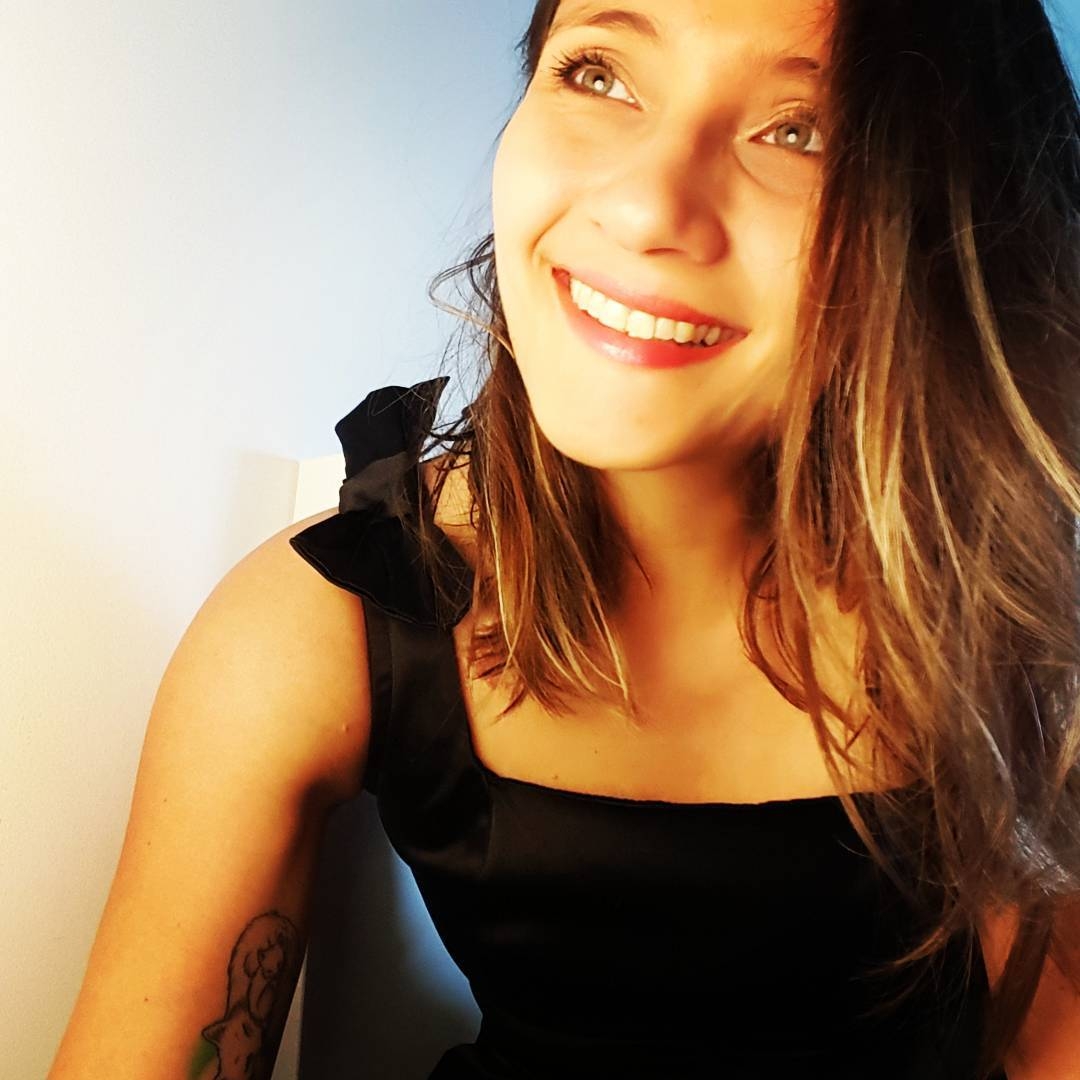InSpace and NWRA

My name is Ale. I am a Brazilian space physicist working at InSpace and the NWRA, focusing on spreading quality scientific information to underrepresented groups, motivating girls in STEM and promoting gender equality in the space physics area.
My research focus is the Sun, and I like to spend my days investigating the solar influences in the interplanetary medium and on our planet. As a scientist, my job is literally to search for answers to all “why” and “how” questions related to nature that are still unanswered. It’s cool, isn’t it?! Following the scientific methodology, I work analyzing data on my computer, discussing my results with colleagues, and sharing our findings by publishing scientific papers and presenting posters/seminars in conferences around the world. I met my American husband in a conference about geophysics in Costa Rica.
The data that I use in my studies come from space-going missions or ground-based stations. Sometimes the investigation requires a complementary dataset, then I start collaborating with other scientists or I go somewhere with new instruments and collect the data/samples that are missing. My fieldwork enabled me to spend months at the Brazilian Antarctic Station, go camping in the Chilean Patagonia, and meet Santa Claus at his office over the Arctic Circle. ;-) My favorite "toy" is now the gigantic Arecibo radio telescope (1,000 feet in diameter, almost 305 meters) that not only can measure the radio waves originating in space but also can transmit a powerful signal that “bounces” in some asteroid, planet or in our upper atmosphere—bringing back precious information about the target. I’m amazed every single time I walk into the control room!
But when I was a child, I had no idea how amazing a scientist's life could be...
I am the youngest kid of a multi-cultural Brazilian family. When I was born, in the early 1980’s, São Paulo (my hometown) was already one of the most populous cities in the world, full of industries and concrete. Observing the night sky during my childhood was challenging due to the cars' smoke and the city lights, but my father’s science books on our living room shelves were a frequent reminder to me to look up and enjoy the beauties of the sky. When I got to high school, I was lucky to have incredible physics and chemistry teachers who made me understand and embrace the fact that I love science. My friends called me a nerd at that time (and until now) but I never took it as bullying, I felt it was more like a compliment! How could I be offended at being known as a person who likes to understand nature?
Following my passion for science and inspired by Dr. Ellie Arroway (the scientist from Carl Sagan’s beautiful story “Contact”), I choose to study physics in college (I went to the Mackenzie University, in São Paulo). I found out there was a radio astronomy group in my university (called CRAAM) and I didn’t stop knocking on their door until they accepted me as an intern. As soon as my adviser showed me a movie of the Sun rotating and exploding, I fell in love… I decided to be a solar physicist and started studying the solar flares in X-ray and sub-mm waves.
The four years that I spent in college were not enough to answer the questions I had, so I spent seven more years at graduate school, ending up with a master's degree and two PhDs in Space Physics (one from a Brazilian Institute, INPE, and another from a Finnish one, University of Oulu). My research interests have broadened since then, and now include: cosmic rays, solar energetic particles, heliospheric modulation, cosmogenic isotopes and space weather.
It is true that my path was not always super exciting. I had considered changing my career direction a few times due to the exhausting productivity marathon that we scientists have to run nowadays (which is especially hard when you are a mom) … But there is always a new project, an old mentor, a brilliant discovery that inspires me to get back on track.
I realized that to be a good scientist, it is not necessary to be a genius, have a mustache and a crazy hairdo (if you have it, it is fine too). You only need to study hard, be curious, focused and well connected. You must keep your mind open for new techniques, theories and questions. And, the most important thing: you must persist searching for your answers… This search always opens space for new and more exciting questions! Being a scientist means being an everlastingly curious person.
Even cooler than finding an answer for your scientific question is sharing your discoveries with people around you: the general public, your peers, your students, your friends, your kiddos (I have two: Gabriel, a very energetic 7-year-old boy, and little Aurora, the smartest 2 year-old girl that I know). Helping people to better understand nature and seeing the wonder in my children’s eyes after understanding the world around them will always be my main motivation to be a scientist. I wrote the collection books about a group of girls and their adventures always relate to space, (Girls in Space collection) hoping to motivate other girls around the Earth to become space scientists, too.
I’m now living my dream, working at the same Observatory where my first inspiration, Dr. Ellie Arroway, worked: the Arecibo Observatory! May all of our nerd dreams come true!